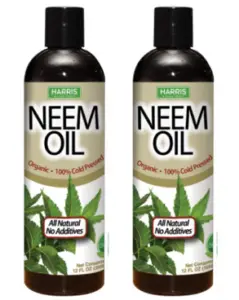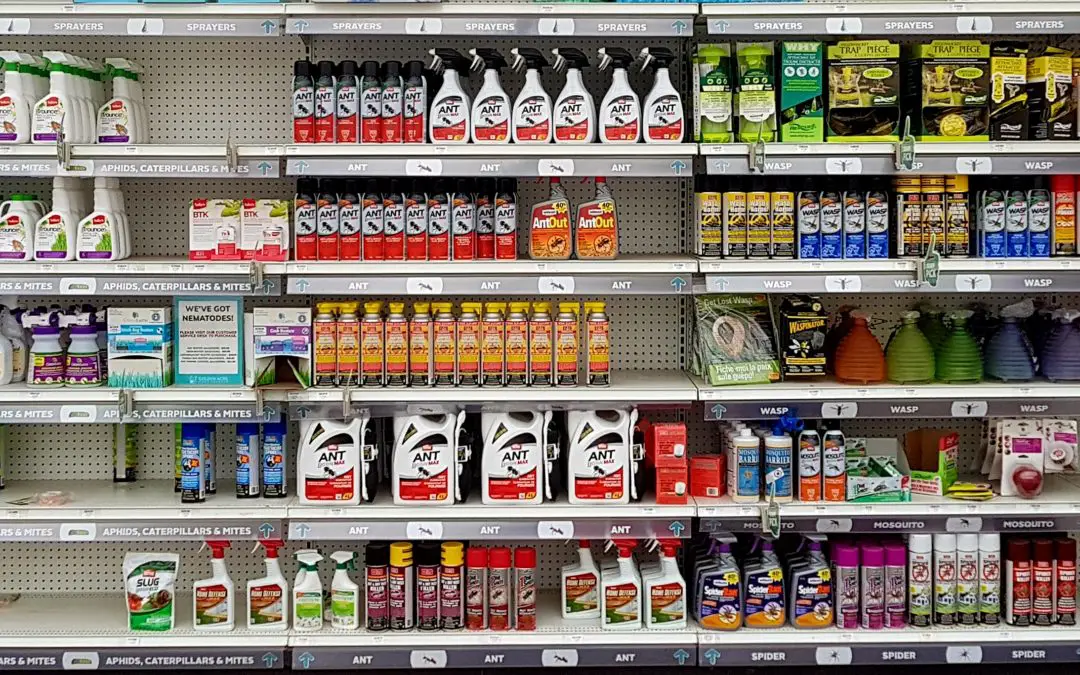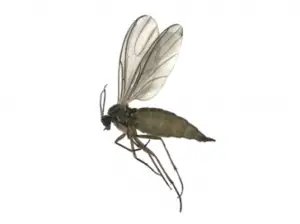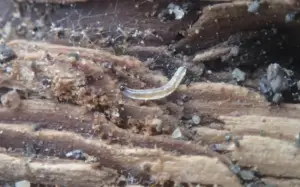First, what works:
Fungus gnats (Bradysia spp.) live and propagate in moist environments, eating decaying matter and fungus in the soil. Prevent their introduction by sterilizing soil and pots, and quarantining new plants from others for 30 days. Natural/Integrated pest management methods include introducing nematodes, green lacewings, or bacteria called BTI (Bacillus Thuringiensis Israelensis). They can also be controlled by exposing the soil to a 1.5% hydrogen peroxide bath, or dilute neem oil. Mechanical methods like adhesives, vinegar traps, and diatomaceous earth also reduce populations.
Next, what not to do…
I had a fig tree once that got completely infested. I didn’t even think to look to the internet for advice. For me, the solution was obvious. These little buzzy things clearly live in air, they fly!
I know just what to do. I’ll drown them! How could an airborne creature survive under water?
So, I took my fig tree in its 10” pot, and gave it a bath. I filled the bathtub up with lukewarm water, and dropped the tree pot in. I let it sit for about 2 hours, job done. Or so I thought.
The infestation absolutely exploded. Turns out a bath isn’t the best idea (it’s actually the worst).
Hmm…
What I’ve tried
To get rid of existing fungus gnats I’ve personally tried sticky traps, apple cider vinegar traps, hydrogen peroxide baths, and neem oil.
If I was going to do it all over again I would pick up some neem oil or BTI containing products at my local gardening shop, or on amazon. Neem oil is easy to find. The main BTI containing product seems to be “Mosquito Bits”. It’s called that because it also kills mosquitos. There’s another similar product called Gnatrol.
Identifying fungus gnats
The fungus gnats we’re talking about are from the Sciaridae, Diadocidiidae, Ditomyiidae, Keroplatidae, Bolitophilidae, and Mycetophilidae families.
Adult fungus gnats are between 2-8 milimeters long, and look at a lot like a mini-mosquito. Their bodies are grey or black, with thin translucent wings. If there are spots on the wings you might have shore flies. If the eyes are red you might have fruit flies.
The adults aren’t strong fliers. They tend to fly short distances, almost hopping.
The larvae have shiny black heads, translucent, and legless. It’s easier to identify the adults.
The females live around 7-10 days.
Larvae feed on fungus and other organic matter for around 2 weeks before they pupate for 2-3 days, emerging as an adult fly.
Their lifecycle from egg to sexual maturity is on the order of around 2-4 weeks, but eggs can lay dormant in soil for a long time.
How are they introduced?
Fresh soil from a new bag of potting mix could contain eggs that hatch when they’re rehydrated and warmed up in the house. Try to find a bag that has no cuts or punctures. Even then, the soil might have gnats from the source. And freezing isn’t going to work, fungus gnats have built-in anti-freeze proteins. Even if a bag was below freezing temperatures in a shed or outside, that won’t kill them.
You can actually spread the soil out into a 1-2 inch thick layer and bake soil in the oven at 350 F for half an hour, and it should kill any fungus gnats and most other pests in the soil.
Bringing new plants into the house is a common way they’re introduced. Fungus gnats can hide out in the vegetation or in the soil. Quarantining new plants can be really important. You can keep them in a separate room so the fungus gnats can’t spread as easily.
Fungus gnats can enter the house alone too! They could fly in a window or an open door. There’s not much you can do about this. But luckily you’ll have some good options to deal with them if they spread, and prevent them from spreading in the first place.
What do fungus gnats do to plants?
Well first off, they don’t hurt established plants. They’re just really annoying. But, they can hurt young growth and seedlings.
Fungus gnats are initially attracted to moist soil. Over-watering can cause root rot, and fungus to grow in planting soil. This is the perfect environment for them to thrive. Lots of moisture, and lots of food (rotten roots and fungus).
Understanding the lifecycle can give you an edge. Females lay up to a few hundred eggs in the top 1-4 inches of soil. The eggs hatch in 2-6 days, into larva. The larva feed on organic materials in the soil. If a plant is over-watered and has root rot, the fungus gnats have a huge supply of food, and the damp soil conditions are ideal. Adults can live for around a week.
The larva stay in the soil for around 2 weeks before emerging as adults. So any solution to this problem could take up to 2 weeks to fix. You may need to reapply any solution.
They spread quickly to other plants. When they spread, they can spread disease. They can be spread by their feet contacting an infected surface and spreading it wherever they land.
Preventative tips: An inhospitable environment
The best thing you can do to deal with fungus gnats is to create an inhospitable environment in your pots. Sharp diatomaceous earth mixed in can physically damage soft-bodied insects. Modify the top few inches of soil so it’s inhospitable. Dry it out through less frequent watering, or bottom watering using sub-irrigation. Or add a layer of sand, pebbles, or other organic barrier that they can’t feed on, and won’t hold on to moisture for long.
Letting plants dry out more between watering. Fungus gnats don’t do well in dry soil. Drying out the soil can cause the larvae to die if they dehydrate. Eggs may live, dormant in the soil, and hatch the next time you water.
Fungus gnat larvae do best in the upper layers of soil. The top few inches. They like the moisture, but not being too deep. If you can make this top layer less hospitable, you’re on the right track. You can add sand, pebbles, or anything non-organic to the top of your pot. Use something that they won’t eat, will breathe, and will make it harder for young larva to burrow into the soil.
Bottom watering, also called sub-irrigation is an effective option. The top few layers of soil remain relatively dry. Plants absorb water from the bottom up. It relies on capillary action.
Diatomaceous earth prevents bugs from eating the soil and is harmless to larger organisms. It’s human safe for consumption if it’s food-grade. The idea is to mix some into your soil, or sprinkle it on the top if you don’t want to disturb the soil. It can be really dusty when you do this. Breathing protection and eye protection is recommended. It’s a good idea to do this outside.
The way it works is that it cuts the insects like tiny razorblades. It works on any soft bodied insects. This physically damages insects, and they die.
Assuming you’ve already got them, here are some next steps.
Getting rid of them
Once fungus gnats have a foothold, there are many tools at your disposal to control them. Catch them in a vinegar or adhesive trap. Kill them with natural enemies like BTI bacteria, nematodes, or green lacewings. Or use compounds and insecticides that kill them.
There are a lot of options. But which are best?

Traps
Vinegar or other attractive traps are an easy solution. Fill a container with a little layer of apple cider vinegar or wine. Cover with a layer of plastic wrap and poke a few small toothpick sized holes. Replace the vinegar once a week. Add a drop of dish soap to reduce the surface tension. This will help the insects sink and drown. This will only trap the adults.
Adhesive traps come in a few forms, you can buy them or make your own. These insects seem attracted to yellow and orange colors. You can put your own glue on yellow or orange paper. Any glue that dries tacky will work. Lay the paper down on the soil or rim of the pot. The slight adhesion will catch the fungus gnats. A layer of petroleum jelly on paper also works in much the same way. Like liquid traps, this will only work on the adults, the larvae stay in the soil.
Introduce living agents: insect warfare
The idea is introduce the natural predators of fungus gnats. Organisms that target fungus gnats in nature, and don’t have any negative side effects for humans or plants. It might seem like a strange idea, but introducing the right lifeforms mimics the natural circle of life, and is a central pillar of integrated pest management.
Beneficial bacteria
 Bacillus thuringiensis israelensis (BTI) is a type of bacteria that only affects flies. It’s human safe, bird safe, pet safe. It just affects flies. It’s available commercially in the form of inoculated pellets and a few other forms.
Bacillus thuringiensis israelensis (BTI) is a type of bacteria that only affects flies. It’s human safe, bird safe, pet safe. It just affects flies. It’s available commercially in the form of inoculated pellets and a few other forms.
One of these products is Mosquito bits. Soak the mosquito bits in water, and use that water to water the plants. The water will contain the beneficial bacteria, and start growing in the soil.
This is an integrated pest management solution meaning it’s something that occurs in nature. BTI Can also be sprinkled on top of soil (recommended on the label), or mixed into the soil, but there are accounts of it molding. That sounds like higher maintenance to me, so I’ll be mixing it into water first when I try it.
Another option is a product called Gnatrol, which I haven’t had the pleasure of trying!
Lacewings
Green lacewings are an insect that’s native to the US, which is great, this means it’s not going to cause any problems releasing them in north America. A great thing about them is that they’re generalists. They’ll eat aphids, scales, spider mites, and most other soft-bodied insects and pests that show up on your plants.
Nematodes
Beneficial nematodes are supposed to be a good natural solution. Steinernema feltiae have been mentioned. The right type of nematodes are natural parasites for fungus gnats. They grow in the gnat, spread bacteria, and ultimately kill it. I haven’t searched for nematodes myself but they sound like an interesting option.
Mites
Hypoaspis miles mites are a type of mite commonly introduced by gardeners to control fungus gnats. They live in the top 1/2 inch of soil and target the soft eggs and larvae.
Pesticides
Pesticides are just compounds and mixtures that give pests a bad day. To many people pesticides are a loaded word. There are definitely situations where they can cause problems, and you probably don’t want them on your corn flakes. Many are created naturally by plants, like Neem Oil.
Hydrogen peroxide
Make a 1.5% hydrogen peroxide solution. So if you’re buying 3% hydrogen peroxide from the store, if you add 1 part of that, and 1 part water, you’re at 1.5%.
What does hydrogen peroxide do to the plants.
Neem Oil
 Neem oil can be bought in a concentrate or a ready to go version. The ready-to-go version is great because you probably don’t need a huge volume of the stuff at home. Get the concentrated version if you have a lot of plants, or a sizeable living wall.
Neem oil can be bought in a concentrate or a ready to go version. The ready-to-go version is great because you probably don’t need a huge volume of the stuff at home. Get the concentrated version if you have a lot of plants, or a sizeable living wall.
You can apply neem oil in a few different ways: as a spray, or as a soak. For fungus gnats both are a good idea. Spray the leaves and stems, and soak the roots. There’s a distinctive smell to neem oil, but it shouldn’t stick around for more than a day or two. If you don’t like the smell, move your plant out of your living or working area and spray it there.
For soaking, the idea is to spread the neem oil throughout the soil, and attack fungus gnats in the larvae stage. Neem oil can act as a systemic insecticide, being absorbed by the plant. The neem oil then can provide protection to other parts of the plant than where it was directly applied.
Diflubenzeron
And if you’re a more commercial operation and aren’t adverse to chemical pesticides: Diflubenzeron has been used at large scale successfully. There are a number of safety considerations and it’s toxic to aquatic invertebrates so run-off must be controlled. Licensing for application may also be required depending on your jurisdiction.
Conclusion
Wow, there are a lot of different ways to control fungus gnats.
At home, my go to would be the quick solution. Something from the hardware store or Amazon. I’d go for a ready-to-use Neem oil spray (I’ve had mixed results, but it’s convenient), or Mosquito Bits or Gnatrol (containing BTI bacteria). Try a few applications, spaced a week or two apart. It can take a few applications to break the breeding cycle and get them under control. And don’t water too much!
On a larger scale, as someone building green walls, I would consider the more preventative measures in roughly this order:
- Sub-irrigation
- Inoculating soil with BTI bacteria
- Beneficial Nematodes
You might be interested to see an experiment where we try all these methods in a more controlled environment.
I haven’t figured out how I could quarantine the experiment in a cost effective way without causing a complete fungus gnat takeover.
Let me know if you have any ideas on this!

I’m Alex Lafreniere. I learned a lot about plants when I built and operated a landscaping company. But, there’s always more to learn. Ever since travelling across the world, I’ve wanted to find ways to bring more tropical and exotic plants into my life. This is the site where I share everything I’ve learned with you.
This site is owned and operated by Plant Hardware, a sole proprietor headquartered in Calgary, Canada. Plant Hardware is a participant in the Amazon Services LLC Associates Program, an affiliate advertising program designed to provide a means for sites to earn advertising fees by advertising and linking to Amazon.com.Plant Hardware may also participate in affiliate programs with Bluehost, Clickbank, CJ, ShareASale, and other sites. Plant Hardware is compensated for referring traffic and business to these companies.




